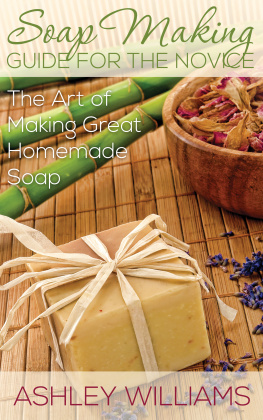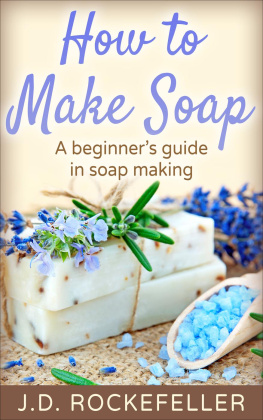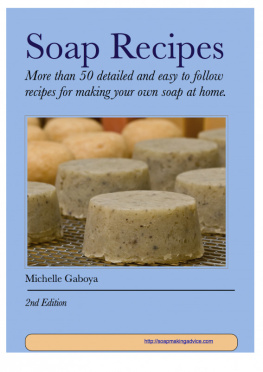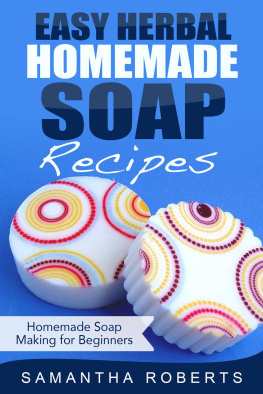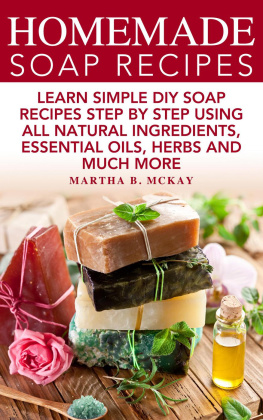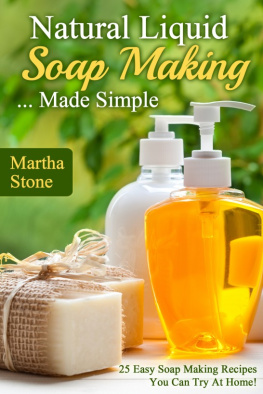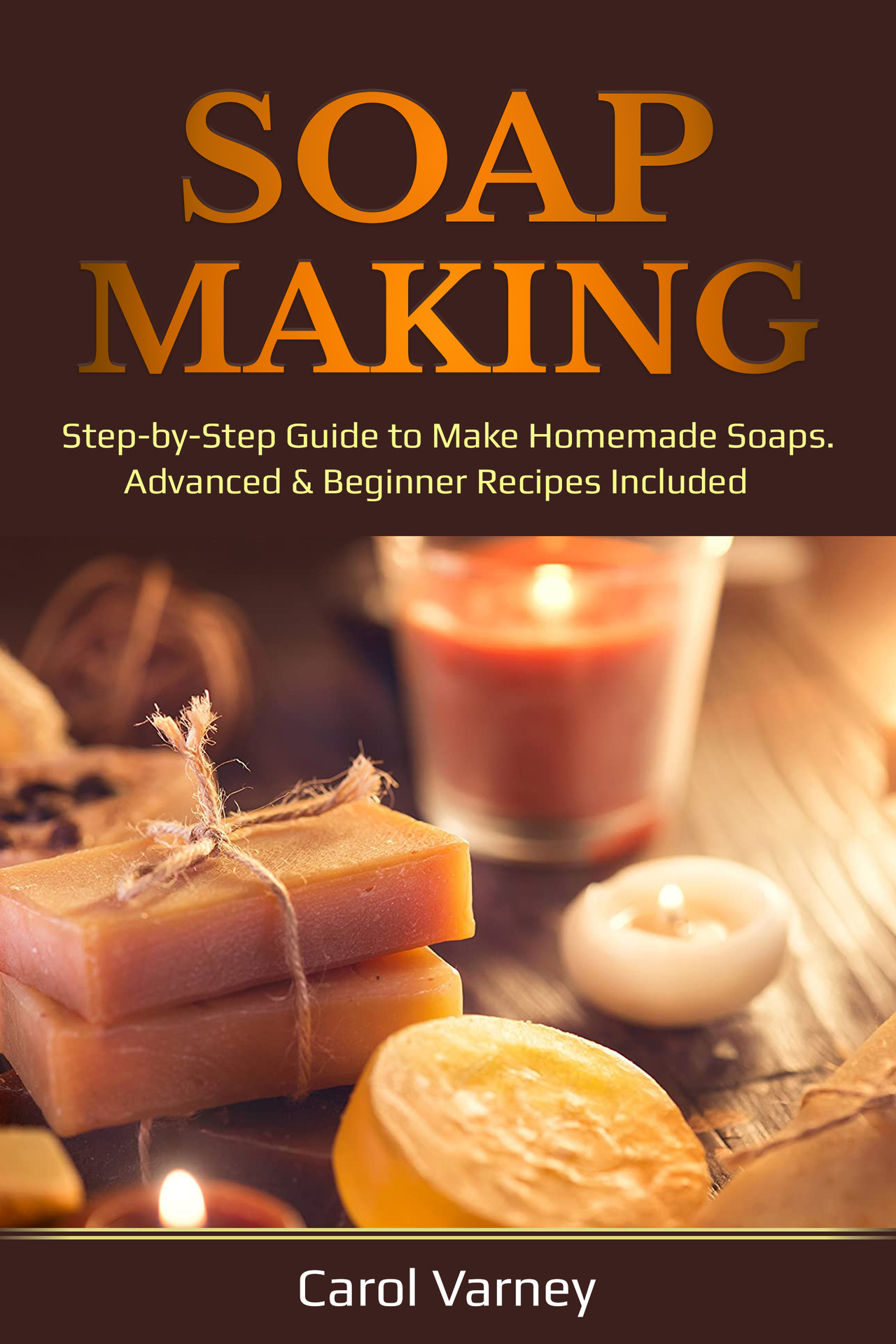Copyright 2020 by Carol Varney
All rights reserved.
No part of this book may be reproduced in any form or by any electronic or mechanical means, including information storage and retrieval systems, without written permission from the author, except for the use of brief quotations in a book review.
Contents
Introduction
Congratulations on purchasing Soap Making, and thank you for doing so. The earliest recipe for soap dates back to the Babylonian Empire but was only used for medicinal and cleaning purposes.
The following chapters will discuss the mold and pour process, cold process, and hot process used to make homemade soap. It comes down to personal preference. The hot and cold process both start with the same process where you use a lye and water solution. The next phase will combine the concentration with oils to begin the process of saponification. The final stage is where the additives are mixed in, and the mixture is poured into a mold.
The hot process used in soap making provides a soap that is ready to use immediately. However, it will last much longer if you allow it to harden for at least one week. It will take four to six weeks for cold process soap to completely saponify and become shelf-ready.
You will soon discover a fantastic way to be creative for yourself and your family. Get the children involved and let them choose the additions of oils, fragrances, and other additives. It will provide them with a feeling of accomplishment that will be carried forward.
Soap Making: First Steps
Soap making can be fun and very useful to save you tons of money. This segment will include the necessary steps for you to get started.
Purchase the ingredients needed.
Select the desired oils.
Calculate the amount of lye & water.
Prepare the space.
Get yourself ready to work.
Prepare the ingredients.
Make the lye solution.
Prepare all of the ingredients & materials.
Mix & melt the oils.
Measure all other ingredients.
F our Methods for Making Soap
The following chapters will further explain the process of making soap.
C old Process : The cold process involves mixing lye (sodium hydroxide) with water, and mixing it with fatty oils, natural colorants such as clay, and essential oils. It is the most popular method of making soap from scratch, where the fatty acids in oils are broken down by the lye.
M elt and Pour: This is a ready-made soap base compound composed of glycerin, fatty acids, and other natural ingredients. The process involves melting premade blocks of soap and adding your desired fragrance. The base is produced using a saponification process, mixing fats with an alkali, such as lye.
H ot Process: This process is a variation of the cold process, whereas you begin saponification and add the mixture to a double boiler or crockpot. The addition of heat will speed the process.
R ebatching : You are essentially bringing life to soap that has already been produced. You grate, melt, and add in additional fragrances, colors, or additives. You can use milk or water and re-blending/recycle them. These are a few suggestions:
- Cocoa Soap : Melt a basic soap bar or one made with cocoa butter. Spoon in a portion of pure cocoa butter, not too much, or your finished product will be too oily. Add a liquid such as milk or water. Once the soap is melted, stir in cocoa powder and a chocolate-scented fragrance.
- Goats Milk Oatmeal Soap : Mill bars that are made with a simple, lightly colored base or out of goat milk. Add goat's milk to melt-down. Once the soap is viscous enough to add ingredients, stir in oatmeal and, if desired, fragrance oil. Consider a honey-scented fragrance - not pure honey.
- Green Tea Soap : Grate a bar that has no fragrance and lightly colored. Add brewed green tea as your liquid. Once the soap has melted, add a spoonful or two of matcha powder and perhaps a green tea fragrance oil from a soap making supplier.
E xperiment with additives. Unlike cold process soap, which may cause certain ingredients to burn or turn volatile, melt and pour, and rebatched soaps allow you to add simple products safely. There are more recipes in the beginner section.
S oap Making Equipment & Safety
Before you start making your first batch of soap, its essential to have all of the equipment you will need. You want to be ensured you are safely mixing the required chemicals and fragrances. This segment is designed so you can acquire the basics.
E ssential Safety Equipment
- Rubber Gloves : It is vital to protect your skin from the raw caustic lye soap mixture. You can purchase the kitchen-type rubber gloves that cover your arm to the elbow, but they are quite bulky. Consider a glove that is without bulkiness, such as a thinner version of latex or nitrile.
- Safety Goggles: Regular glasses are not sufficient protection from the raw soap mixture. The lye can create an alkali burn, which is extremely dangerous for your eyes. If you wear regular eyeglasses, you must be sure to purchase a pair of goggles that will easily fit over them from all sides.
- Adequate Clothing Coverage : Please dont prepare the soap in a pair of shorts or flip flops. At all times, it is imperative to wear protective clothing, including close-toed shoes and a long-sleeved shirt with a pair of jeans or other type of long pants.
- Paper Mask: Wearing this type of mask is optional. However, it is an additional method that can help protect your face and reduce the hazard from the lye fumes. It is especially vital if you are preparing soap in large batches or if you are sensitive to lye fumes. Pick up a batch of paper masks and be on the safe side of your experience.
E ssential Equipment For Soap Making
Equipment used for soapmaking should never be reused for food prep or storage. Fragrance particles and lye can become ingrained in the cracks, even if it has been thoroughly washed. It is also recommended to hand wash the items used instead of using a dishwasher.
Measuring Scale
Purchase a scale that is capable of measuring in ounces, pounds, and grams. It should also extend to 1/10th place. For accuracy, most soap recipes are measured by weight -not volume. Walmart has one which fits the bill for less than $20. Many recipes will delegate the measurement in ounces, whereas others may have them in grams. The electronic scale can do the math for you!
Soap Mold
The options for molds are plentiful. You can choose from silicone, wood, or plastic. Each has its pros and cons.
- Silicone Molds : Using this type of mold is simple to use, unmold, and clean, making them an excellent option for beginners and advanced crafters. However, some pros believe the mold takes a bit longer to unmold, and the soap can speckle with bubbles if the soap overheats.
- Wood Molds: If you have a large batch, a wooden mold is your best choice. The wood type box makes it easier to force the gel phase and is cost-effective and sturdy. However, you will need to line the container with a layer of freezer paper or use a silicone liner to avoid the soap from sticking to the mold. Wooden molds will last for years with proper care and storage.
- Plastic Molds: The molds are available in a variety of designs and shapes. They are excellent for small - professional looking bars. The plastic-type molds can be difficult to unmold, requiring more time and are also prone to soda ash, which makes it more challenging to use in the production of larger batches. Its recommended to have a recipe with sodium lactate and plenty of hard oils to ensure the bars will come out quickly and cleanly.


